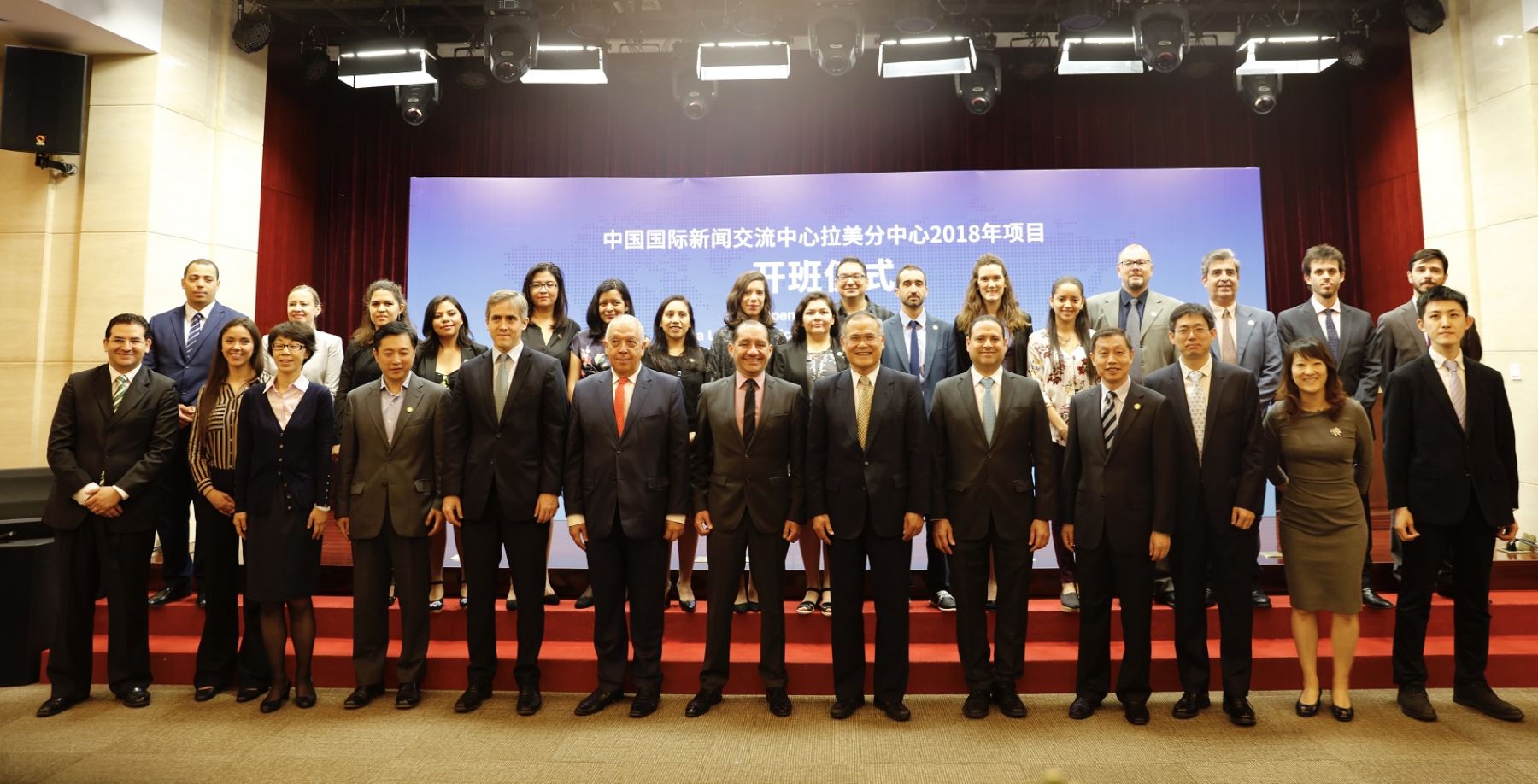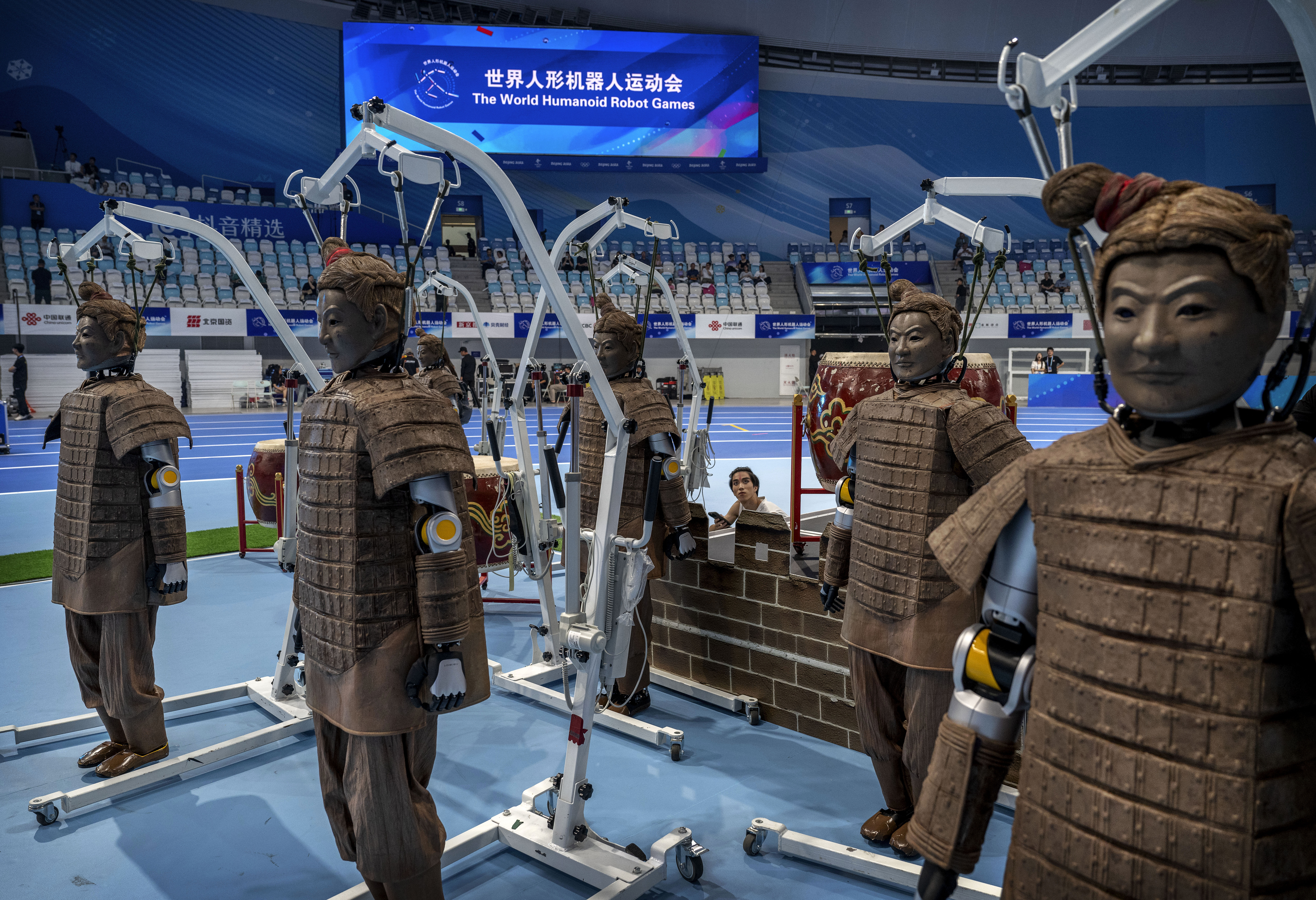
Chinese Media and Latin America: “Borrowing a Boat” to Set Sail
Chinese Media and Latin America: “Borrowing a Boat” to Set Sail
“Though we’re geographically distant, we’re all developing countries and the progress and well-being of our populations are common objectives,” Liu Biwei, vice-president of the China Public Diplomacy Association, a soft-power-focused organisation, said on opening the China-Latin America & Caribbean Press Center in Beijing last month (Andina, May 22 2018).
The center, which brings journalists from Latin American media outlets to China for cultural immersion programs lasting five to six months, was heralded in 2016 by President Xi Jinping, who said on a visit to Peru that parties must “share the fruits of cooperation so that the vessel of common destiny benefits its people” (Chinese Embassy in Peru, November 22, 2016) [1]. Careful observers might ask, however, to whom the vessel belongs. “Borrowing a boat to go out on the sea” (借船出海) is a phrase used to describe the provision of Chinese news to foreign language media, one of several new mechanisms—including the Press Center, and bilateral and multilateral cooperation agreements—through which China’s state media apparatus is extending its reach into Latin America.
While the economic and political aspects of the China-Latin America relationship have attracted substantial attention over the past decade, the media aspect of this burgeoning partnership has been largely overlooked, despite its important implications for the changing dynamics of power in the region. Latin American scholars have noted China’s expressions of soft or ‘sharp’ power—seeking to penetrate informational spheres with positive news that supports its foreign policy agenda. But it is necessary to look to recent developments in China to understand this new phenomenon.
“Correct Guidance of Public Opinion”
Media is high on the policy agenda for CCP General Secretary Xi Jinping. The National People’s Congress in March saw the consolidation of the government apparatus for media, news and publishing regulation, under the Central Propaganda Department “in order to strengthen the concentrated and unified management of news and public opinion work” (Xinhua, March 21), tightening the Party’s grip over media considerably.
Xi also sees media as an important component of foreign policy, similar to his immediate predecessor, Hu Jintao, who enshrined “cultural soft power” (文化软实力) as an official instrument of PRC foreign policy. Xi has only deepened this approach, telling members of the CCP Politburo in 2014 that: “China should be portrayed as … an Eastern power with good government, a developed economy, cultural prosperity, national unity, and beautiful scenery” (People’s Daily, January 1 2014).
In 2014, Xi said that China would create a “new-type mainstream media” (新型主流媒体) that is “powerful, influential, and credible”, a pronouncement which would eventually lead to the 2018 consolidation of China Central Television, China Radio International, and China National Radio into the “Voice of China”. This is but a part of the build-up of state media’s overseas reach over the past decade, which itself reflects the increased importance of “discourse power” (话语权) as an element of PRC foreign policy [3].
In other national contexts, these strategies have sparked public debate. In Australia, for example, purported CCP influence operations, exposed by media and counterintelligence investigations, have led to heated debate over alleged censorship and the merits of a recently passed counter-inference law (BBC, March 8 2018). Media exchanges and paid supplements have also been scrutinised in this context: Last year, senior Australian journalists met with Chinese counterparts in a series of events co-organized by the CCP’s All China Journalists Association (ABC, June 11 2017); Fairfax Media runs China Watch, a supplement produced by the state-run China Daily, monthly in The Sydney Morning Herald, The Age and Australian Financial Review (Sydney Morning Herald, 31 May 2016).
In Europe, a number of foreign policy analysts have noted the ways in which the PRC has sought to build support for its policy agendas through both overt and covert means. The CCP’s strategy has seen it fund think-tanks and media training, as well as paid inserts in high-profile European newspapers (including Handelsblatt, The Telegraph, and El País), in a strategy it calls “borrowing foreign newspapers” (借用海外报刊) [4][5]. In the UK, the People’s Daily also has a copy-sharing arrangement with the right-wing tabloid Daily Mail (Guardian, August 12 2016). In the United States, meanwhile, the debate about PRC influence has often centered on the presence of Confucius Institutes within universities (Reuters, March 21 2018), but also includes media supplements, most notably the China Watch supplement in the Washington Post (The Atlantic, February 3 2011).
While other scholars have begun to note the proliferation of Chinese state print and online media in Latin America, there has been less analysis or public debate, thus far, about the impacts of China’s soft power and influence efforts there as compared to other regions. Yet there is much worth scrutinizing.
Media Partnerships
Since Xi Jinping became president in 2013, several Latin American countries have established or upgraded their diplomatic ties with China. A number of them, including Argentina, Brazil, Chile, Ecuador, Mexico, Peru, and Venezuela, have seen ties with China elevated to the level of “Comprehensive Strategic Partnership”—the phrase the PRC uses to describe its most important bilateral relationships.
Media cooperation is often an important element of these partnerships. For example, the Comprehensive Strategic Partnership between Mexico and China, signed by President Xi and counterpart Enrique Peña Nieto in 2013, outlines “intensifying exchanges by young students, academics, media and sport” as desired outcomes.
China’s 2016 Comprehensive Strategic Partnership with Peru included cultural exchanges and media cooperation as a means to meet broader development goals, pledging to amplify exchanges in areas including culture, education, science and technology, and media and communications to “achieve greater and faster development.”
The equivalent document co-signed by China and the government of Venezuela in 2014 expressly referenced the potential of media and other parts of the cultural sphere to influence opinion in favor of China and Venezuela’s joint diplomacy. On the 40th anniversary of the establishment of Sino-Venezuelan diplomatic ties, both parties indicated that the aim of media cooperation is to “strengthen public support for bilateral relations.”
To the same end, in June 2018 China and Bolivia signed a strategic partnership agreement in which they too pledged to increase exchanges in media and other parts of the cultural sphere in order to “foster mutual understanding and consolidate the popular basis Sino-Bolivian friendship.” Media cooperation with Bolivia has also taken the form of participation in a media chiefs summit in Beijing last year, at which Cecilia Dorado, an editor of the Santa Cruz-based paper El Deber proposed to build a network of Chinese and Latin American journalists.
In Argentina, these mechanisms have been even more high-profile. In addition to the inclusion of a media component in the two countries’ Comprehensive Strategic Partnership agreement, in 2015 Argentina’s communications ministry signed a separate accord with China’s State Administration for Press, Publishing, Radio, Film and Television (now State Administration of Radio and Television, SART; iProfesional, February 4 2015). This along with another deal signed between the Argentine Senate and PRC state news agency Xinhua, point to a concerted effort to control the flow of information and messages that Argentine audiences receive about China (Xinhua, November 14 2015).
In 2016, following these agreements, the state-run China Daily launched its paid China Watch supplement in the regional Mendoza, Santa Fe and Entre Rios editions of the newspaper Diario Uno. The supplement also now features in La Capital (Rosario) and in the finance publication Cronista. On launching the bi-weekly supplement, China Daily‘s deputy editor Gao Anming said the launch was “based on mutual political trust, mutual benefit in trade and mutual learning” (Diario Uno, 2016). People’s Daily also has a cooperation agreement with the independent daily La Nación (La Nación, June 14 2015).
Media cooperation is also a feature of multilateral agreements such as the CELAC-China 2015-2019 Cooperation Plan, an agreement between 33 Western Hemispheric nations and China. CELAC-China is the “main channel for overall cooperation” with Latin America, according to Chinese foreign minister Wang Yi. Among its provisions are mechanisms through which to advance media cooperation, including the exchange of resident correspondents, conducting joint interviews, and training media personnel in order to “build new media capacity”. The agreement also pledges to “welcome the landing of Chinese radio and Television programs” in the region.
The media element looks set to grow within the CELAC-China. In an interview at the CELAC-China ministerial forum in Santiago, Chile, in January 2018, Alicia Bárcena, the head of the UN’s Economic Commission for Latin America and the Caribbean (ECLAC/CEPAL) said the forum would likely establish a separate platform for media, that would function on a par with its platforms for cooperation on business, infrastructure, agriculture, academia, political parties, and science and technology (Dialogo Chino, January 23).
Prior to the Santiago meeting, op-eds authored by China’s foreign minister Wang Yi appeared in Venezuelan national El Universal and Peru’s El Peruano celebrating the potential for fruitful development cooperation at the forum (El Universal, Jan 18; El Peruano, Jan 18). On the same day, similarly worded articles attributed to the Chinese ambassadors to Colombia and Mexico appeared in major national newspapers in each country (El Tiempo, January 18; El Financiero, January 18).
Conclusion
Such “joint construction” will, no doubt, continue—and clearly many will judge such partnerships to offer important co-benefits. It is clear, however, that there has been little scrutiny in these discussions of the “borrowing a boat” strategy, or of the significant emphasis on media cooperation, exchange and the embedding of Chinese state media content into Latin American media, as an element of such new relations.
With so-called “development finance” from Chinese policy banks to Latin America since the turn of the century surpassing US$150 billion in 2017—significantly more than from any other multilateral institution—Latin American media professionals are keen to report one of the contemporary region’s biggest stories (The Dialogue, March 8). Yet restricted by linguistic and cultural barriers, they have so far obligingly facilitated advances from Chinese media organs.
As unfolding debates in other national contexts show, including ones that have sown profound mistrust, such practices are integral to understanding contemporary China’s influence strategies. Understanding how these might affect perceptions and relationships in the region is important, as China’s bilateral and multilateral relations with Latin America will only continue to expand.
Notes
[1] The language of ‘common destiny’ has become one of Xi’s favorite phrases for encapsulating the rise of a new, Sino-led international order (China Brief, February 26).
[2] For more, see Anne-Marie Brady “China’s Foreign Propaganda Machine”, Journal of Democracy, Volume 26, Number 4, October 2015, p. 54.
[3] 话语权 can also translated as “right to speak”. In the CCP’s view, one’s ‘right to speak’ is commensurate with one’s level of influence. The term is therefore best understood as the expression of a desire for greater influence on the international stage.
[4] For more, see Thorsten Benner and Thomas Wright Testimony to U.S. China Economic and Security Review Commission Hearing on: “China’s relations with U.S. allies and partners in Europe and the Asia Pacific” April 5 2018.
[5] For more, see Anne‐Marie Brady Testimony to U.S. China Economic and Security Review Commission China’s Hearing on “Propaganda and Perception Management Efforts, Its Intelligence Activities that Target the United States, and the Resulting Impacts on U.S. National Security” 30 April, 2009.


